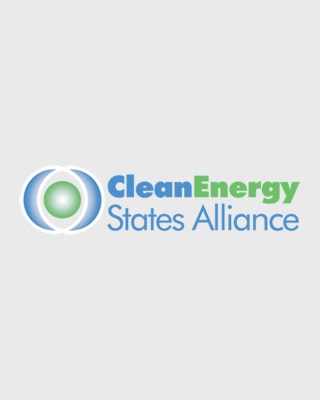The Connecticut Green Bank: Innovation in Finance Sparks New Model for Public/Private Investment in Clean Energy
The Harvard Kennedy School’s Ash Center for Democratic Governance and Innovation announced in July that the Connecticut Green Bank had won this year’s Innovations in American Government Award. The Ash Center award recognizes excellence and creativity across a wide range of government initiatives, from technology and public health programs to conservation and education. That Connecticut’s pioneering clean energy financing model won this prestigious award, selected from among thousands of entries, speaks to the important role of states in accelerating the renewable energy transition.
Connecticut first established the Green Bank in 2011 through Public Act 11-80 as a key part of the state’s strategy for achieving its energy and climate goals. The main objective was to have cleaner, cheaper, more reliable sources of energy while also creating jobs and spurring local economic development. Leveraging private investment dollars with limited public funds is at the heart of the green bank’s operation.
Since its inception, the Connecticut Green Bank has attracted over $6 of private capital for every $1 of public funds committed. Overall, the Connecticut Green Bank has achieved nearly $1.1 billion in clean energy investment across the state. This investment has supported almost 25,000 projects and more than 230 megawatts of clean energy, resulting in greenhouse gas emissions reduction of 3.7 million tons. Over 13,000 jobs have been created, translating to an estimated 7.5 to 20 percent of total job creation in Connecticut, and clean energy prices have declined by about 20 to 30 percent.
Among the Green Bank’s most successful programs is Commercial Property Assessed Clean Energy (C-PACE), which allows commercial and industrial property owners to make clean energy or efficiency upgrades at no upfront cost. The payment is made over time through property tax bills. In July 2017, Connecticut’s C-PACE program reached a milestone of providing $100 million total in closed project financing. The Green Bank’s residential financing programs—including the Energize CT Smart-E Loan, other homeowner products, and the multifamily programs—also surpassed the $100 million mark in total dollars deployed this year.
Another residential sector highlight is that deployment of residential solar PV in low- to moderate-income census tracts is now nearly on par with the distribution of owner-occupied homes in those tracts, driven by the widespread availability of no-money-down, third-party-owned financing models, including the Green Bank’s partnership with PosiGen, which combines a solar lease with an energy efficiency package.
“The success of Connecticut’s Green Bank is spurring the adoption of similar efforts by states and cities across the country, and illustrates how Hartford’s innovative approach to green energy financing can create jobs, reduce harmful greenhouse gas emissions, and lower energy bills,” said Stephen Goldsmith, Daniel Paul Professor of the Practice of Government and the Director of the Innovations in American Government Program at Harvard’s Kennedy School of Government.
The Connecticut Green Bank’s pioneering work has since been replicated in several other states and one county, and its impact underscores the important role of states as laboratories of experimentation. When it comes to building a 21st century clean energy economy, states are leading the way.
“It is an important time to be working on clean energy at the state level,” noted Warren Leon, executive director of the Clean Energy States Alliance (CESA), a national nonprofit organization that serves as a consortium to support states with renewable energy programs. “The Connecticut Green Bank represents the kind of ingenuity and innovation that is necessary to advance clean energy. While there is no magic bullet or easy solution, innovative financing is a critical piece of the puzzle.” The Green Bank’s C-PACE program was also awarded a State Leadership in Clean Energy Award by CESA in 2014.
The State of New York created its own green bank in 2013. The NY Green Bank, which operates as a division of NYSERDA, invested $291.6 million in clean energy during fiscal year 2016-2017. California followed suit in 2014, establishing the California Lending for Energy and Environmental Needs (CLEEN) Center as a part of the state’s infrastructure bank. CLEEN supports energy efficiency upgrades and LED lighting installations for public institutions. The Hawaii legislature created its version of a green bank, the Hawaii Green Infrastructure Authority, in 2013. In 2015, Rhode Island expanded the mandate of the Rhode Island Infrastructure Bank to include green energy initiatives, and the Bank adopted Connecticut Green Bank’s successful C-PACE program. Also in 2015 Montgomery County, Maryland established the first county-level green bank.
Harvard’s Ash Center award included a $100,000 prize to support replication and dissemination of the winning innovation. The Connecticut Green Bank has committed the prize money to the further development of a green bank academy with its partner in the effort, the Coalition for Green Capital. The academy will provide educational resources for policy makers and students as well as, current and future green bankers, with the goal of “accelerating the successful creation and efficient operation of green banks through education.”
“The Connecticut Green Bank has sparked a green bank movement. Our simple promise of increasing affordability and accessibility to green energy has evolved into a greater commitment to our stakeholders,” states Bryan Garcia, President and CEO of the Connecticut Green Bank. “We believe that everything we do, we do to help families thrive and businesses grow. We do it in the interest of achieving inclusive prosperity not only within Connecticut and across the country, but around the world.”
Published On
October 19, 2017

